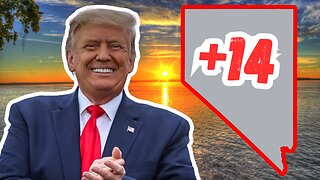Chola kings were reaching Vietnam when Somnath was being raided
When Somnath Temple Was Being Raided, Chola kings Were Reaching Vietnam
Indian Mythology
Published on 15th August, 2022, in Times of India.
As per Brahmin lore, all civilisation in Tamil lands emerged in a mystical past after Agastya brought grammar from the Himalayan regions, along with mountains and rivers which became known as Southern Kailasa and Southern Ganga. But these are clearly later tales, composed less than thousand years ago, seeking to obscure the contribution of earlier Buddhists and Jain monks, and the even earlier Dravidian drum-beating poets, patronised by warrior chieftains, who venerated gods of the mountains, pastures, farms, drylands and seashores, and merchants who travelled by sea to faraway golden islands of Southeast Asia, the Survanabhumi, to trade Indian textiles.
The oldest Tamil poems that we have are around 2000 years old. And they speak of five landscapes and connect each one with an emotion and a god.
Seashore is linked to long separated lover and the sea-god Kadalon
Cropland linked to the treacherous lover and the rain-god Vendan
Forestland linked to the waiting lover and the cowherd god Mayon
Mountains linked to the eloping lover and the warrior god Ceyon
Dryland linked to the anxious nervous hero and the wild goddess Kotravai
Some argue that the sea-god is Varuna and the rain-god is Indra, that Ceyon is Kartikeya, or Shiva, and Mayon is Krishna and Kotravai is Kali. But these seem like forced comparisons. When Vedic civilisation was emerging in Gangetic plains around 1000 BCE, South was full of who were smelting iron; and farmers who were burying the dead in large pots, and marking the spot with dolmens made with giant rocks; and pastoral people with herds of sheep and goat were burning dung heaps to create large ash mounds, across the Deccan. These people were clueless about Indra, Agni and Soma. By 300 BCE, the Mauryan empire extended along highways that extended from the north of India down south, but only upto Tungabhadra, not beyond. We know very little of what was happening further south at this time except perhaps what we learn from early Sangam songs. It is in Ashokan edicts we learn of the kings known as Cheras, Pandyas and Cholas. In later literature, this region is known as Tamilakkam.
Early Sangam works indicate some familiarity with the northern people, who are referred to as the Aryas. For example, when one poet sees the three kings, the Cheras, the Cholas and Pandya king sitting together talking, rather than fighting as they usually did, he equates them with the three fires of the Vedic Brahmin priests indicating familiarity with the fires meant to make oblations to the gods, to the ancestors and to the household found in Vedic traditions. There is one reference indicating familiarity with the Ramayana. Poet refers to monkeys picking up the jewellery dropped by Sita when she has been abducted by Ravana and taking it to the king. But they do not refer to the South as the land of the vanara (monkey), as it came to be known in the Vijayanagara period, seven hundred years ago. There is also one reference to the Mahabharata where we hear of a Chera king who provides food for the soldiers who fought at Kurukshetra
AboutUs About us https://bit.ly/3GUPFOa
Contact us +919942258153 kvk.subadhra@gmail.com
Thank You Very Much for Sharing YourValuable Thoughts
-
 6:06
6:06
Chrissy Clark
12 hours agoJK Rowling Calls Out Trans-sanity In EPIC Tweets
3235 -
 11:01
11:01
DepressedGinger
11 hours agoIs Trump a *LOCK* to win Nevada after this poll?
148 -
 26:57
26:57
Landed Fishing
2 days ago $0.09 earnedTampa Florida Offshore Fishing (Multi-Species) Catch with Hog Squad Fishing
7.85K14 -
 10:31
10:31
JoBlo Horror Originals
22 hours agoSilent Rage: From Slasher Tropes To Chuck Norris
18.4K4 -
 8:49
8:49
Morgonn
13 hours agoIs HATE speech FREE speech? Cancel Culture is RUINING Gen Z! Texas Tech
22K24 -
 9:58
9:58
MichaelBisping
12 hours agoBISPING reacts: Fury vs Usyk BRAWL "An Embarrassment!" | John Fury HEADBUTTS Usyk Team
24.8K12 -
 3:47
3:47
Michael Heaver
1 day agoPoland Demands EU REFERENDUM
29.4K43 -
 1:51:54
1:51:54
The Pat Bev Podcast with Rone
10 hours agoPat Bev and Rone Live 🔴 | Oklahoma City Thunder @ Dallas Mavericks Game 4 | Pat Bev Podcast w/ Rone
27.1K3 -
 2:06:05
2:06:05
SNEAKO
17 hours agoSNEAKO X RAMPAGE JACKSON X MATAN EVEN
121K99 -
 1:48:48
1:48:48
Kim Iversen
13 hours agoCAREER REHAB: Cuomo & Dr. Birx Demand Probe Into Vax Injuries | Dr Phil And Lindsey Graham Make Genocidal Statements
84.5K255